
The Army of the Tennessee was a Union army in the Western Theater of the American Civil War, named for the Tennessee River. A 2005 study of the army states that it "was present at most of the great battles that became turning points of the war—Fort Donelson, Vicksburg, and Atlanta" and "won the decisive battles in the decisive theater of the war."

John Pope Cook was an Illinois politician and a general in the Union Army during the American Civil War. He served in the Western Theater and played a prominent role in securing the Union victory at the Battle of Fort Donelson, helping to force the surrender of the defenders.

David Sloane Stanley was a Union Army general during the American Civil War. Stanley took part in the Second Battle of Corinth and the Battle of Stones River as a division commander. He was later made a corps commander under William Tecumseh Sherman and sent to Tennessee to oppose John Bell Hood's Army of Tennessee. At a critical moment in the Battle of Franklin, he saved part of George D. Wagner’s division from destruction, earning America's highest military decoration, the Medal of Honor. Later he explored the Yellowstone River, and his favorable reports encouraged settlement of this region.

John Cleveland Robinson was an American soldier in the United States Army. Robinson had a long and distinguished military career, fighting in many wars and culminating his career as a brigadier general and brevet major general in the Union Army during the American Civil War.
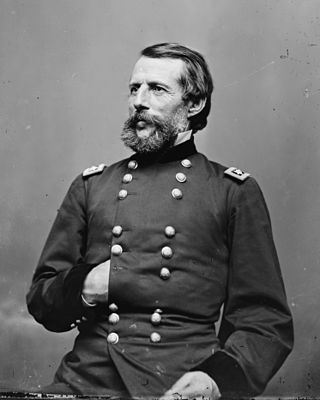
Erasmus Darwin Keyes was a businessman, banker, and military general, noted for leading the IV Corps of the Union Army of the Potomac during the first half of the American Civil War.
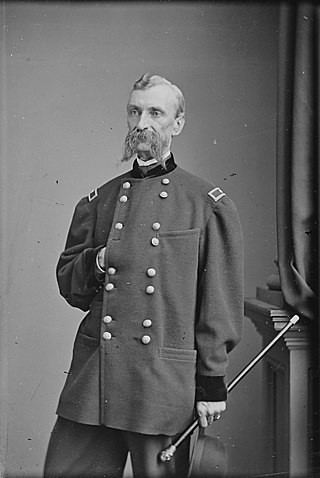
Alexander "Sandor" Asboth was a Hungarian military leader best known for his victories as a Union general during the American Civil War. He also served as United States Ambassador to Argentina and as United States Ambassador to Uruguay.
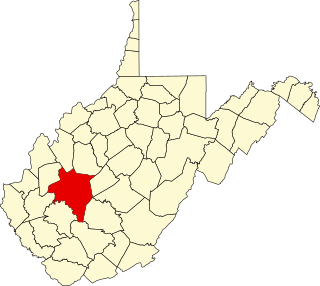
The Battle of Charleston was a Confederate victory in Kanawha County, Virginia, on September 13, 1862, during the American Civil War. Troops led by Major General William W. Loring defeated a Union force led by Colonel Joseph Andrew Jackson Lightburn. This battle, which featured extensive use of artillery but few casualties, was the second major fight in Loring's Kanawha Valley Campaign of 1862 that succeeded in driving Union forces out of the Kanawha River Valley. All points in the Kanawha River Valley were in the southwestern part of Virginia at the time of the battle, but are now part of the state of West Virginia.
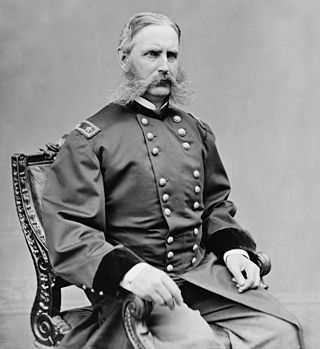
Christopher Columbus Augur was an American military officer, most noted for his role in the American Civil War. Although less well known than many other army contemporaries, he was considered an able battlefield commander.

George Washington Cullum was an American soldier, engineer and writer. He worked as the supervising engineer on the building and repair of many fortifications across the country. Cullum served as a general in the Union Army during the American Civil War, primarily in the Western Theater and served as the 16th Superintendent of the United States Military Academy. Following his retirement from the Army, he became a prominent figure in New York society, serving in many societies, and as vice president of the American Geographical Society. The society named the Cullum Geographical Medal after him.
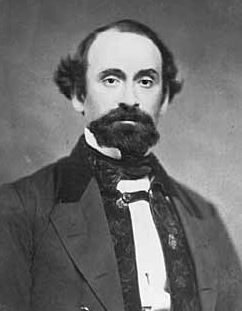
John Benjamin Sanborn was a lawyer, politician, and soldier from the state of New Hampshire who served as a general in the Union Army during the American Civil War. He was also a key member of the reconstruction era Congressional-appointed Indian Peace Commission, which negotiated and signed several important treaties with native American tribes.
Isaac Campbell Pugh was a United States volunteer soldier who was a veteran of the Black Hawk War, the Mexican–American War and the American Civil War; rising to the rank of Brevet brigadier general.
The Department of Virginia and North Carolina was a United States Military department encompassing Union-occupied territory in the Confederate States during the Civil War. In 1863 it was formed by the merging of two previously existing departments: the Department of Virginia and the Department of North Carolina. In 1865 the two departments were once again separated.
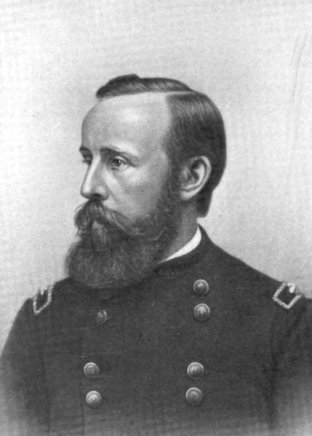
Edward Harland was a Union general during the American Civil War. He was associated with early battles of the IX Corps as well as Union involvement in North Carolina and the Tidewater region of Virginia.
District of Arizona was a subordinate district of the Department of New Mexico territory created on August 30, 1862 and transferred to the Department of the Pacific in March 1865.
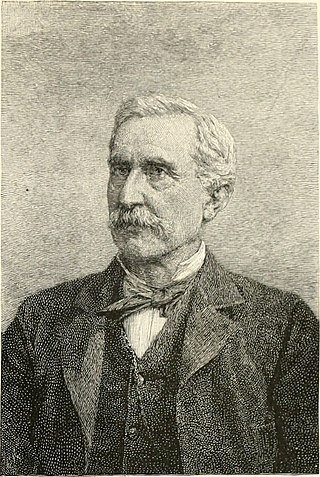
William Whann Mackall was a Seminole Wars veteran, Mexican–American War veteran and Confederate States Army brigadier general during the American Civil War. He was a United States Army officer for 24 years before he resigned his commission in order to join the Confederate Army. After the Civil War, he was a farmer in Fairfax County, Virginia.
Department of Washington, was a department of the Union Army constituted on April 9, 1861. It consisted of the District of Columbia to its original boundaries, and the State of Maryland as far as Bladensburg. It was merged into the Military Division of the Potomac on July 25, 1861. Later it was recreated on February 2, 1863 as the consolidated Department of Washington and XXII Corps. It was again made the Department of Washington in 1865 and that command remained until 1869 when it was disbanded.
Department of Florida, was the military administrative department established by the Union Army. The Department of Florida was established on April 13, 1861 to defend and administer the few remaining Federal installations remaining in Florida. Following the secession of Florida in January 1861, Florida troops seized most Federal property in the state with the exceptions of Fort Zachary Taylor at Key West and Fort Pickens at Pensacola. The Union Navy would use the port of Key West to establish a blockade of the Atlantic and Eastern Gulf coasts of the Confederacy, with the South Atlantic Blockading Squadron and the East Gulf Blockading Squadron.
Department of Key West, was a military department of the Union Army created in February 1862 from the Department of Florida. It had command over the posts that were newly captured by “Expeditionary Corps” combined of Army and Navy units under Brigadier General Thomas W. Sherman and Flag Officer Samuel Francis Du Pont. These were posts at Fernandina, St. Augustine and the forces investing Fort Pulaski and blockading the Savannah River on Tybee Island at the mouth of the river.

The Kanawha Valley Campaign of 1862 was Confederate Major General William W. Loring's military campaign to drive the Union Army out of the Kanawha River Valley during the American Civil War. The campaign took place from September 6 through September 16, 1862, although an important raid that had impact on the campaign started on August 22. Loring achieved success after several skirmishes and two battles, and Union troops retreated to the Ohio River and the safety of the state of Ohio.

The Battle of Fayetteville occurred in Fayette County, Virginia, on September 10, 1862, during the American Civil War. A Confederate Army, consisting of multiple brigades commanded by Major General William W. Loring, drove away a Union brigade commanded by Colonel Edward Siber. The battle is part of the Kanawha Valley Campaign of 1862.














